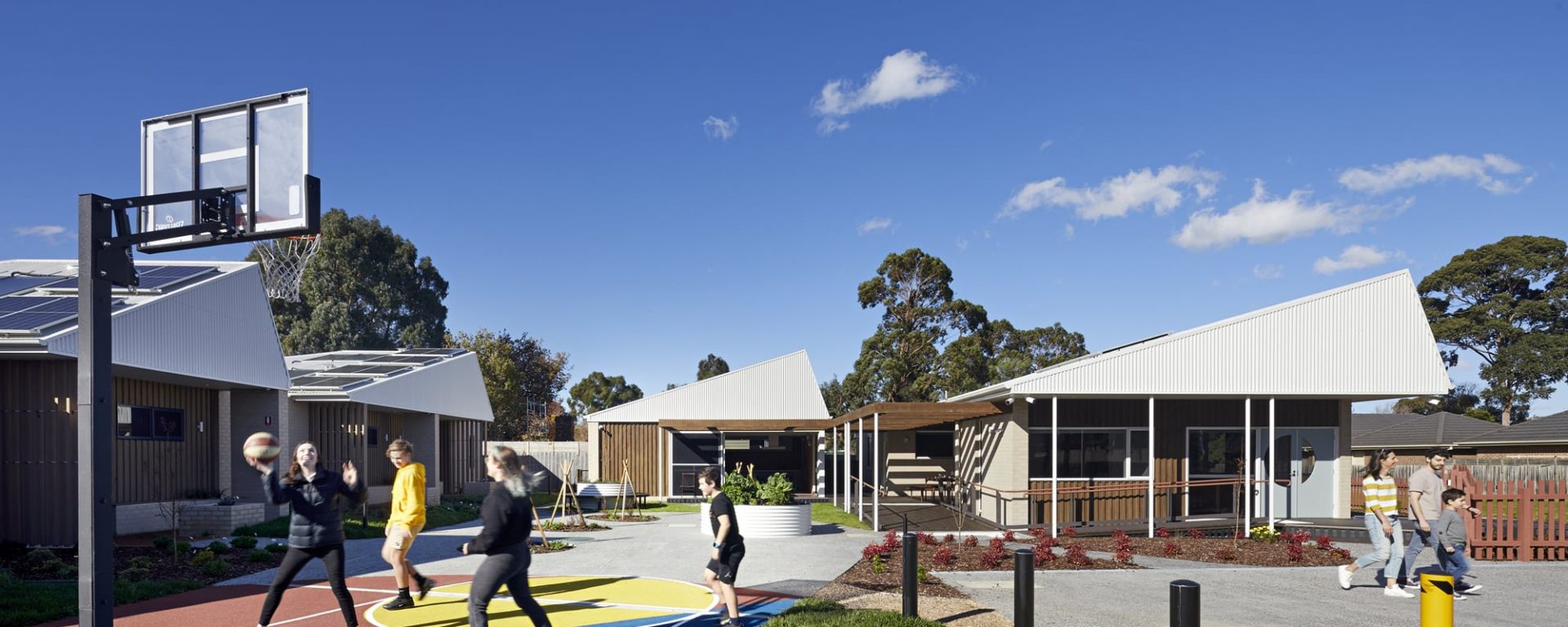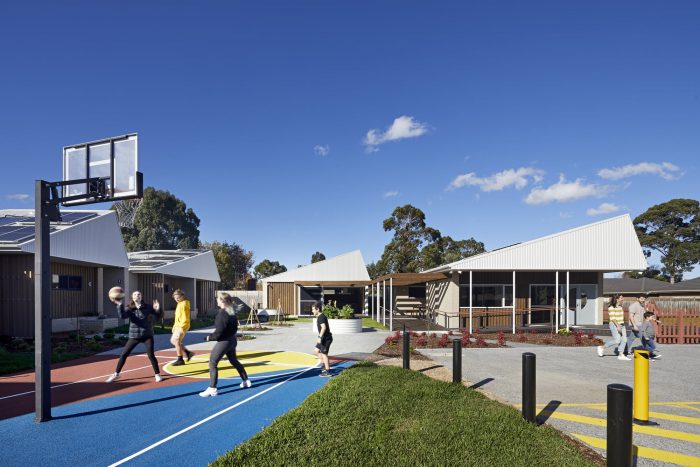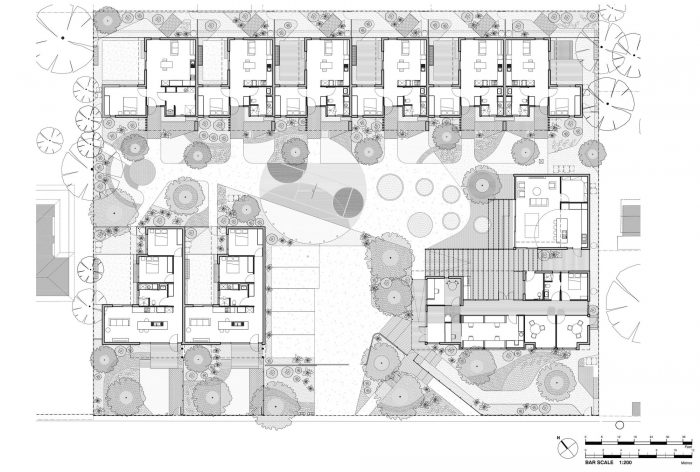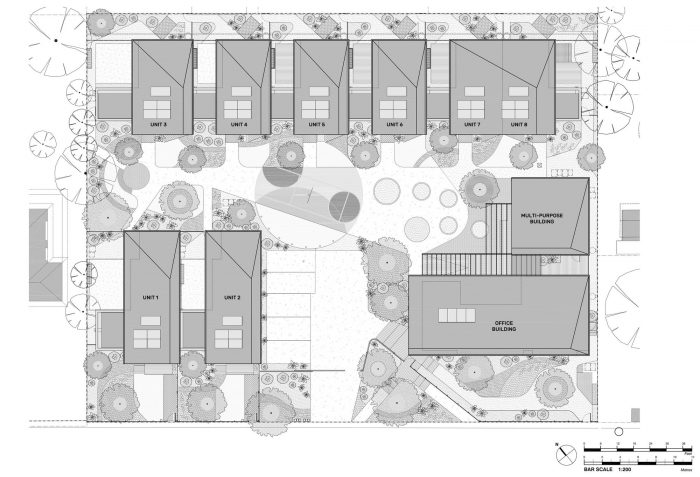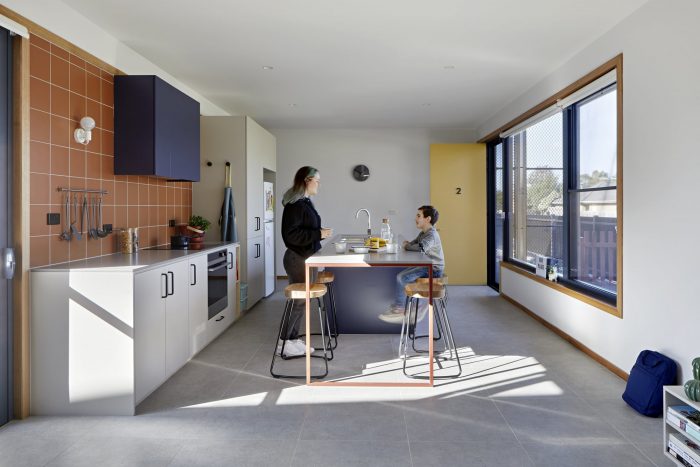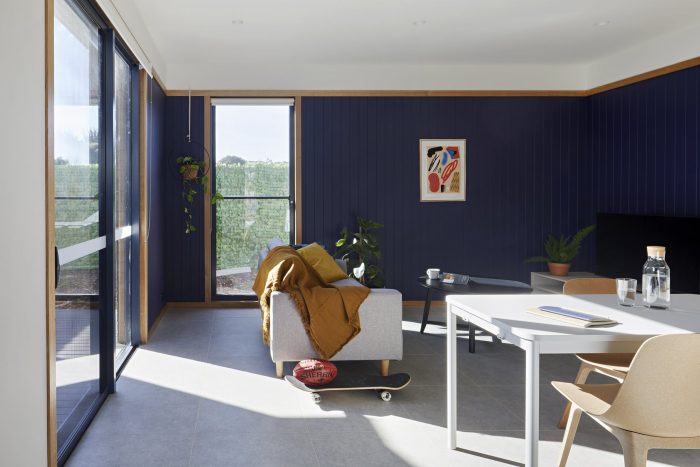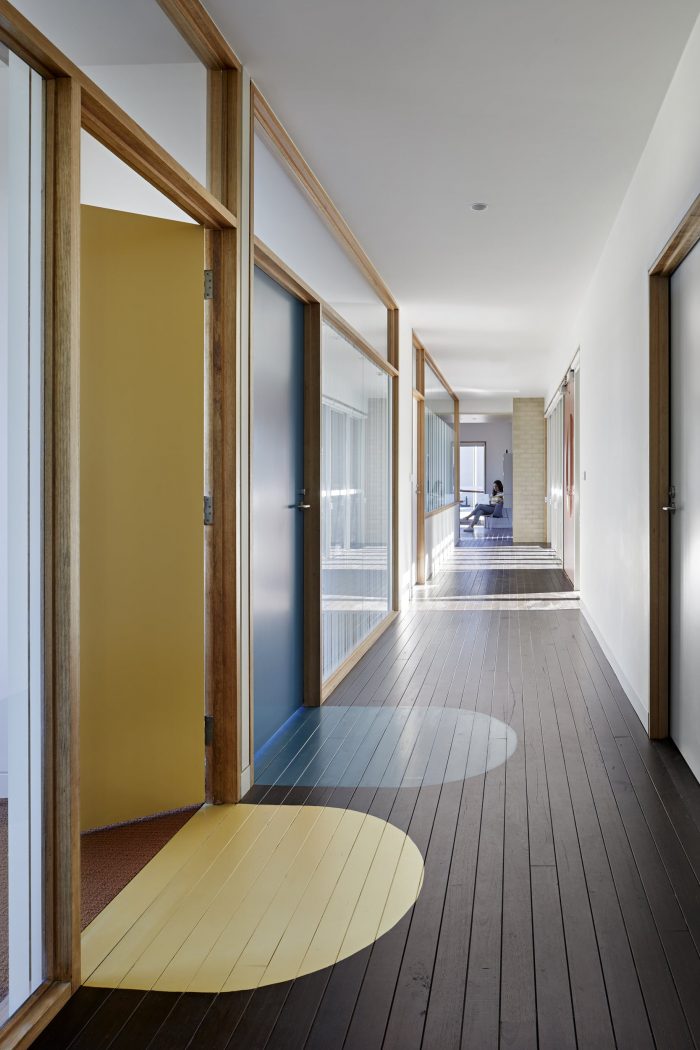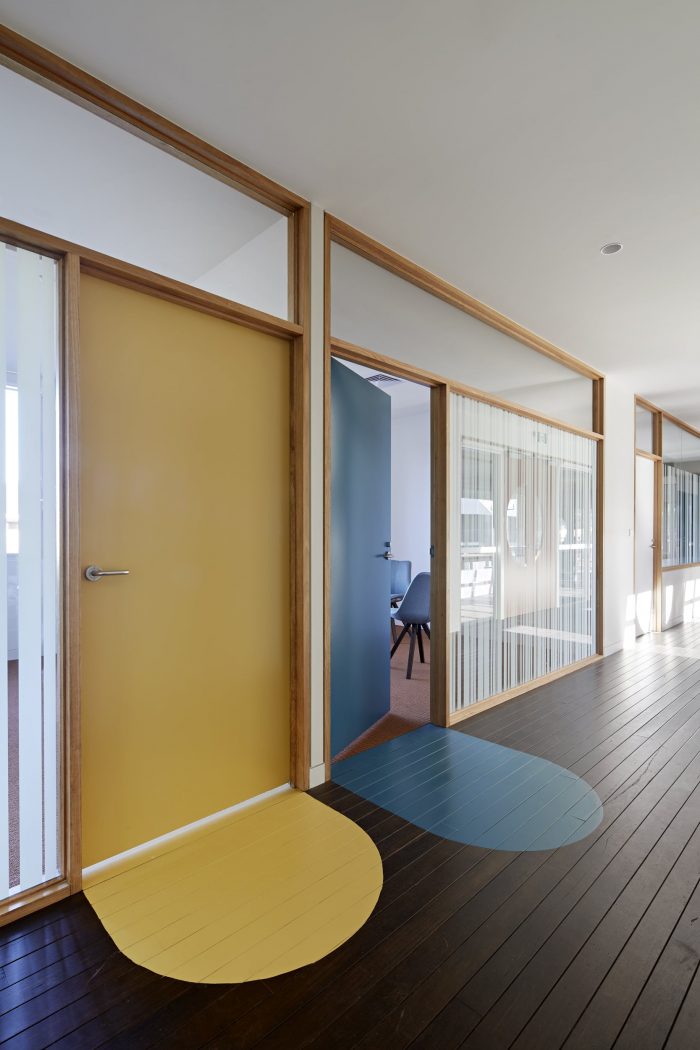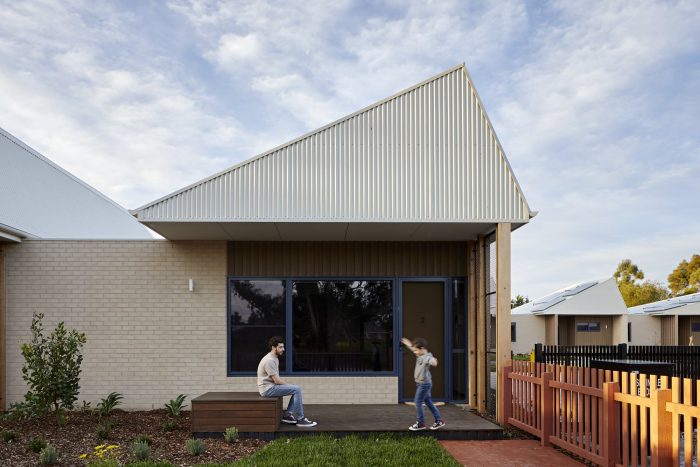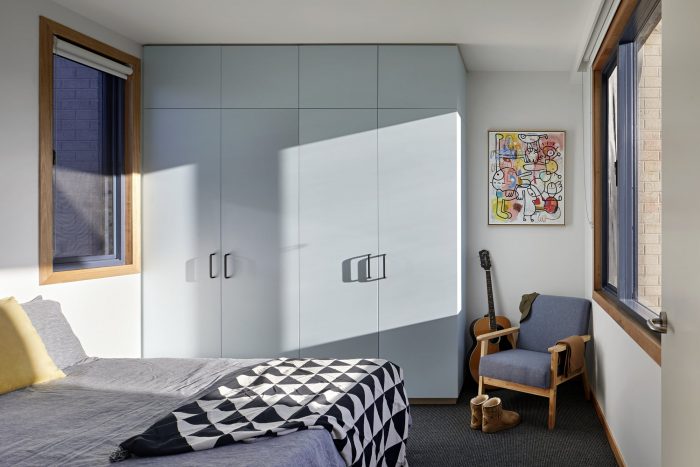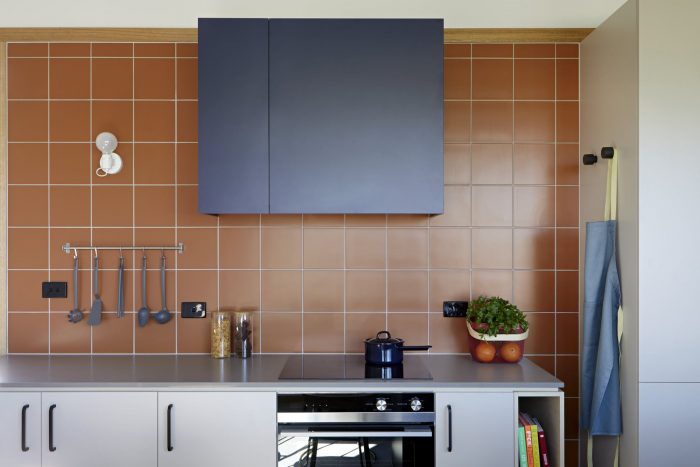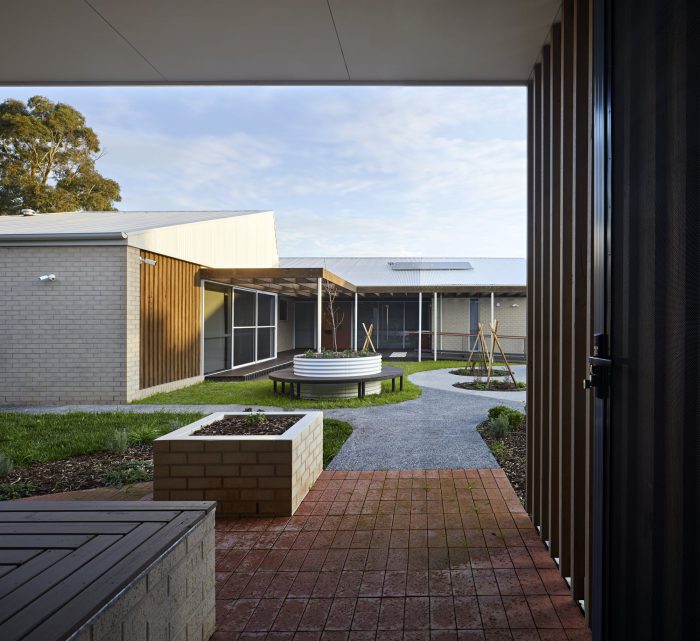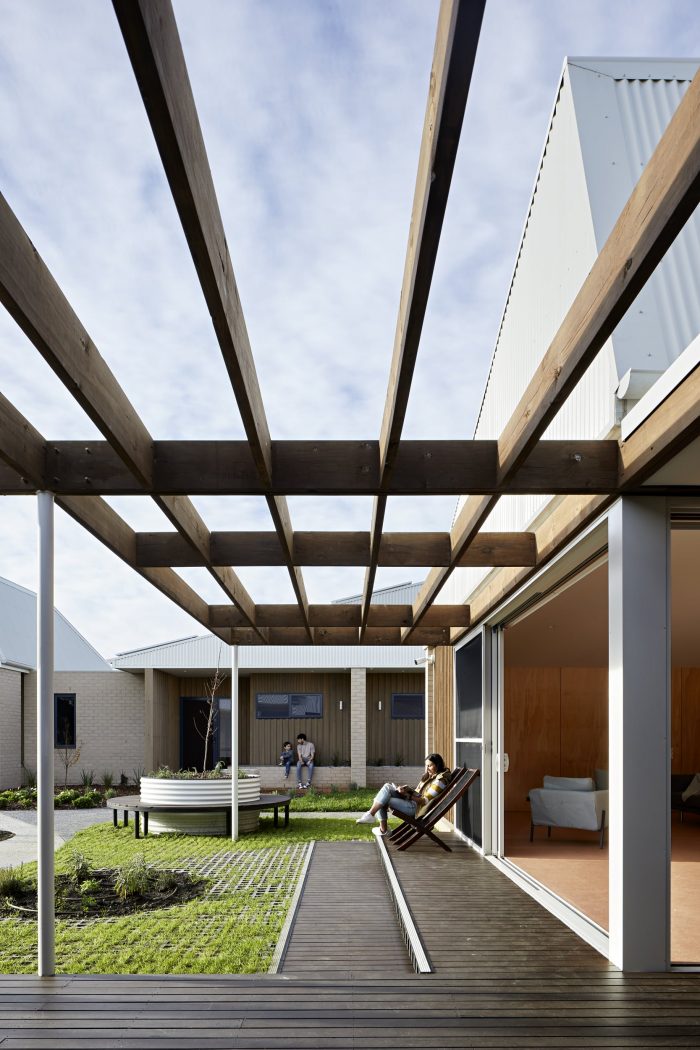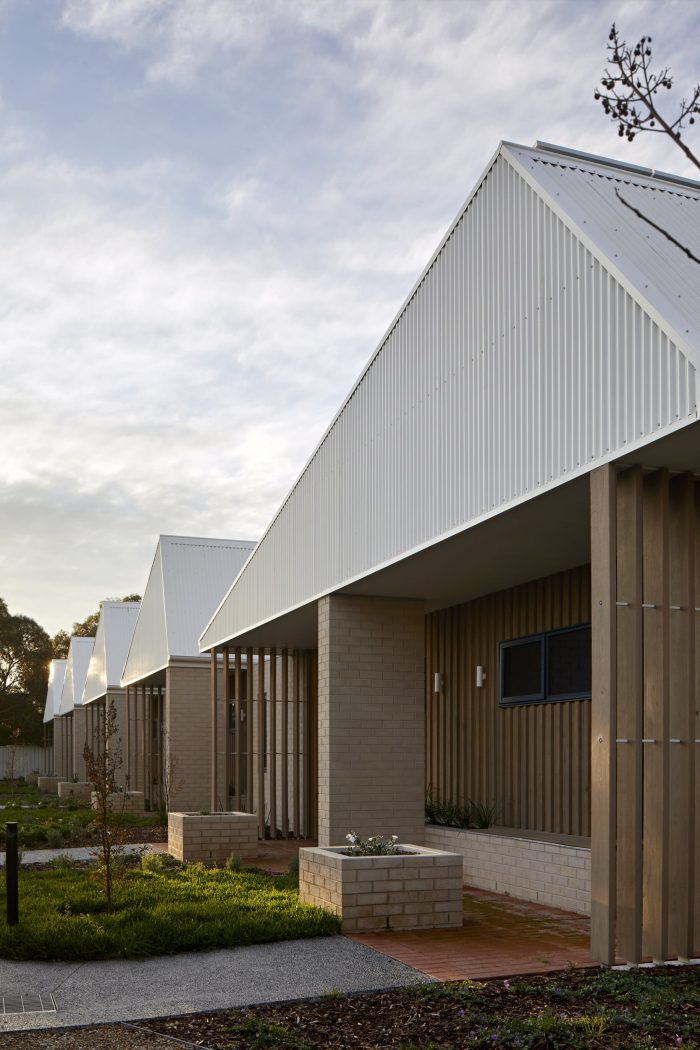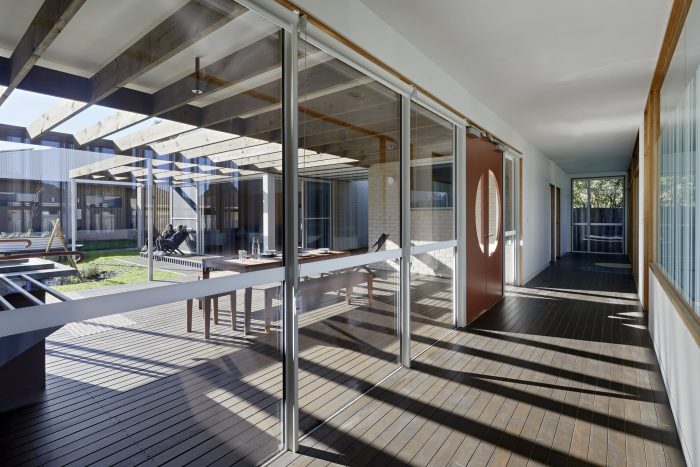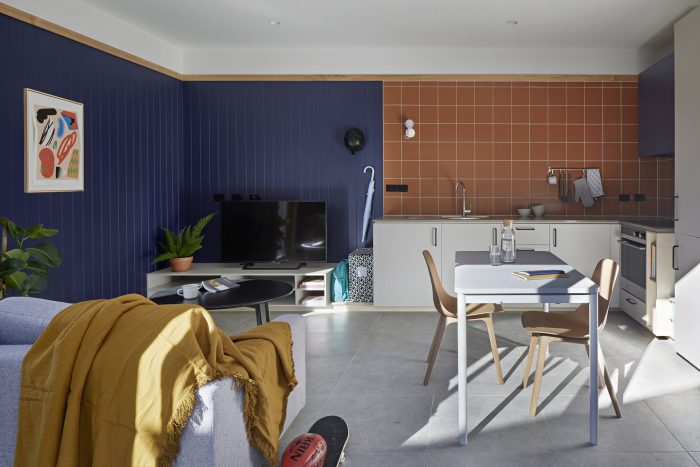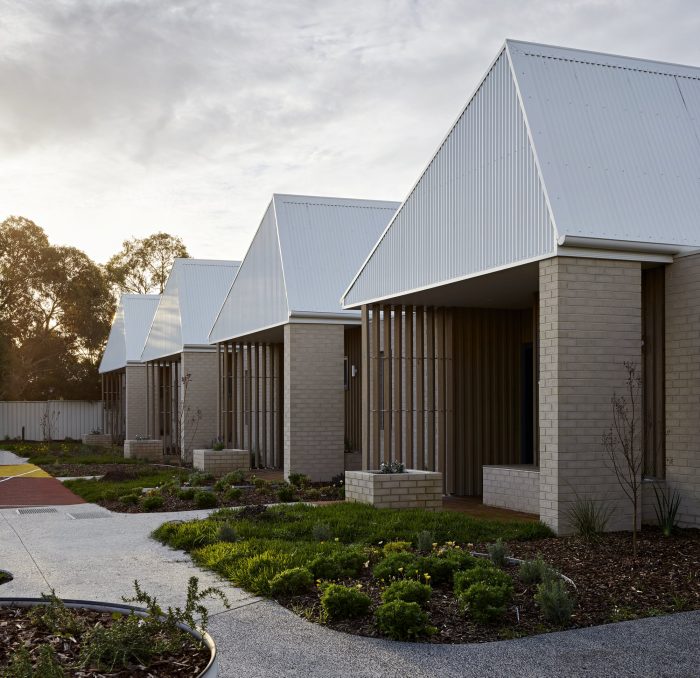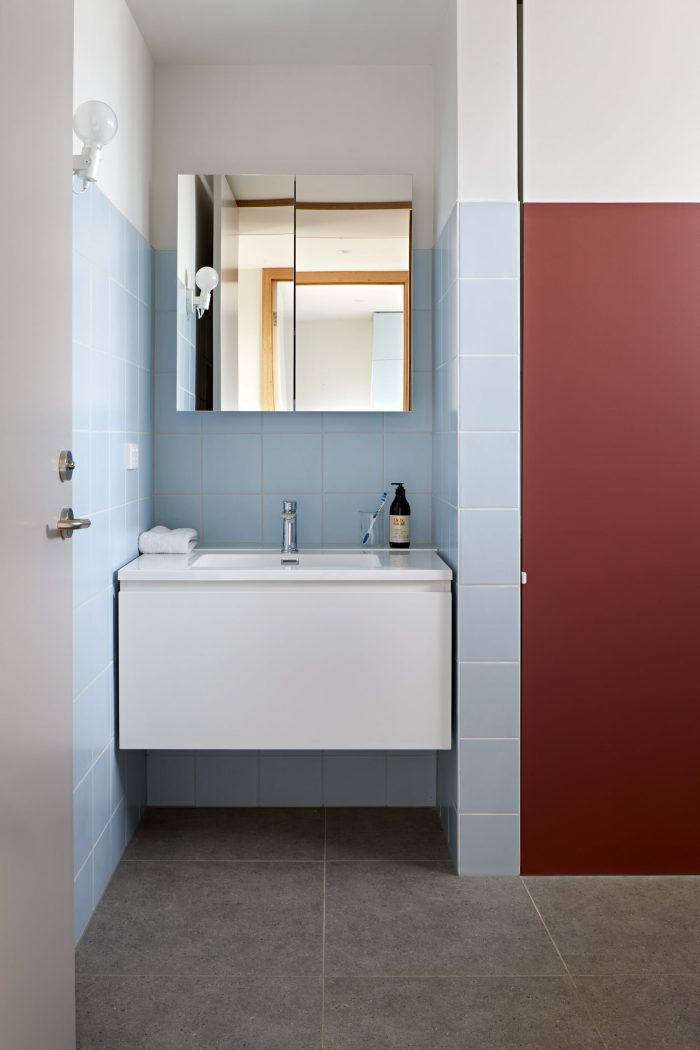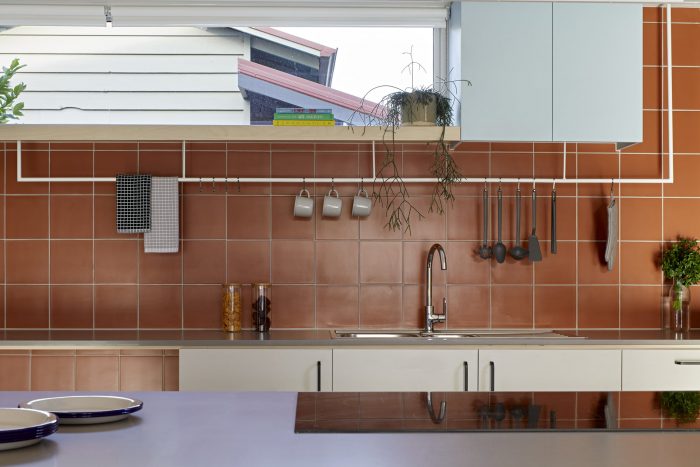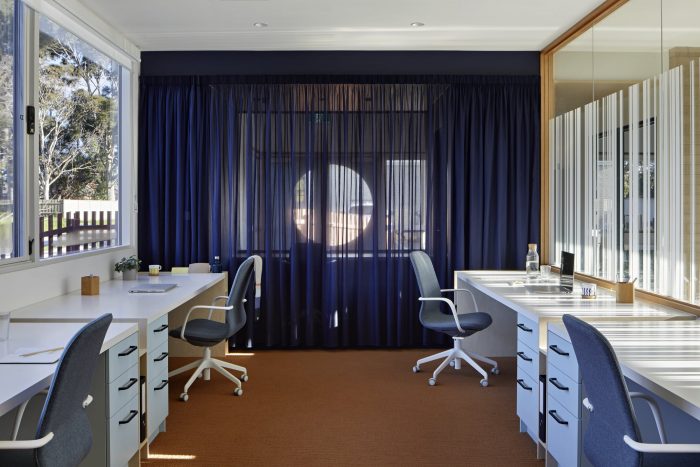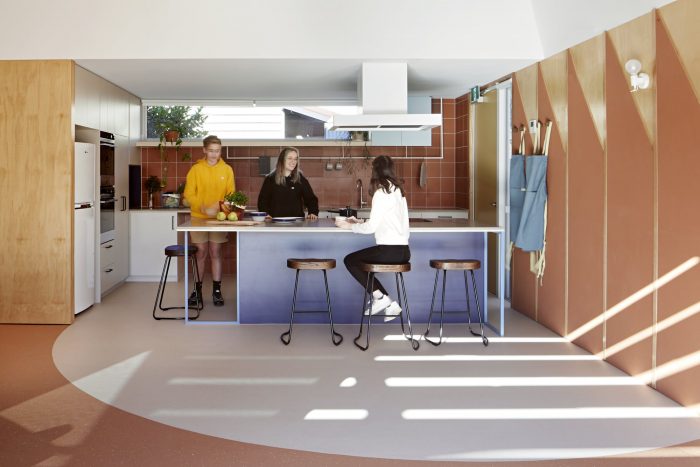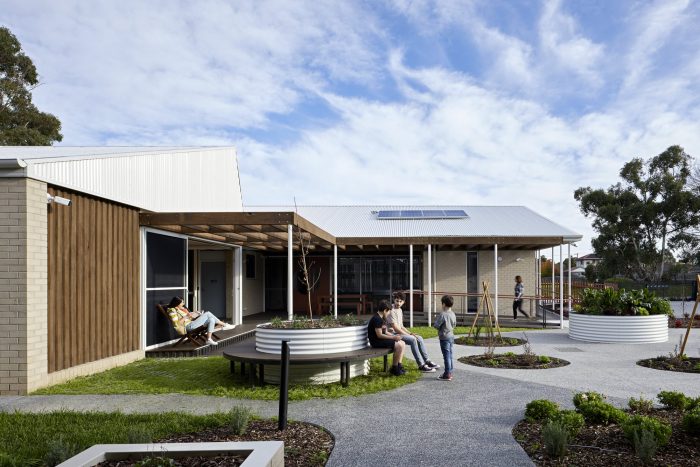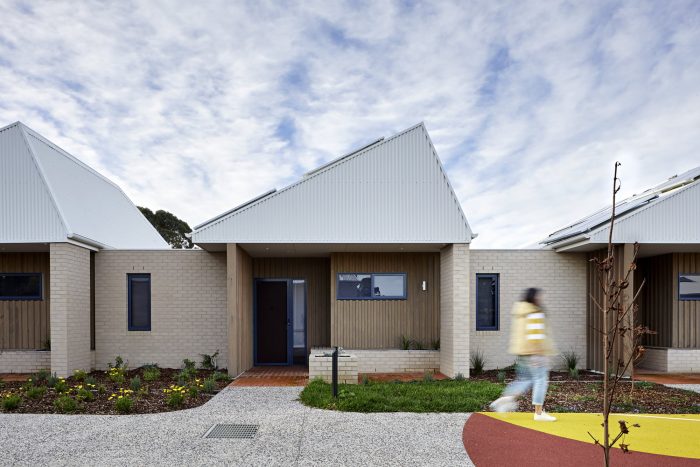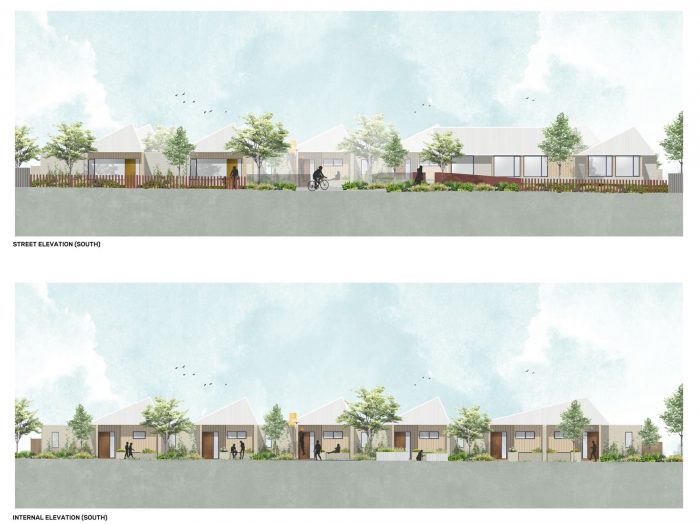WAYSS青年过渡中心由卫生与公众服务部(DHHS)委托,位于墨尔本的外东部郊区,为处于无家可归边缘的弱势青年提供一个家和支持网络。
The WAYSS Youth Transition Hub, commissioned by the Department of Health and Human Services (DHHS) and located in Melbourne’s outer eastern suburbs, provides a home and support network to vulnerable young people on the brink of homelessness.
该中心源于 “真正重要的年轻人支持 “计划,并遵循被称为 “向前迈进 “的早期干预模式,提供设施和支持,使通常在16-18岁之间的孩子具备独立生活的技能,为他们的生活的下一个阶段做好准备。
Originating from the ‘Support for Young People That Really Counts’ program and following a model of early intervention known as the ‘Step Forward’ approach, the hub provides facilities and support to equip kids, typically between 16-18, with skills for independent living, preparing them for the next stage in their lives.
该项目共提供6个一室一厅和2个两室一厅的住宅,其中一个一室一厅的住宅是为行动不便的人设计的。这些单元由一个现场行政大楼提供支持,该大楼有接待处、办公室、会议室和供过夜的护理员房间,以及一个独立的多功能空间,配有娱乐/休息室设施和培训厨房,所有这些都围绕着一个中央的公共花园布置。
In total, the project provides 6 x one-bedroom and 2 x two-bedroom dwellings, with one of the one-bedroom dwellings designed to cater to someone with impaired mobility. The units are supported by an onsite administration building with reception, offices, meeting rooms, and a carer’s room for overnight stays, as well as a separate multipurpose space, complete with rec/lounge facilities and a training kitchen, all arranged around a central, communal garden.
这是一个独特的、令人兴奋的和复杂的项目,但你可能不会从街上注意到任何不寻常的东西:这就是设计。参考邻近房屋的规模和形式,延续街道的正式节奏,该中心依偎在其环境中,以避免 “与其他地方不同 “的耻辱,并产生一种家的感觉。由于所有的建筑都围绕着一个中央开放空间,该中心支持一种保护和社区的感觉,鼓励居民相互接触,同时调解他们与更广泛的邻里关系。行政区域具有与住宅相同的家庭规模和材料,并通过其与公共开放空间的连接,作为一个视觉线索,表示 “我们在这里,作为你们社区的一部分,支持你们”。
This is a unique, exciting, and complex project, but you might not notice anything unusual from the street: and that’s by design. Referencing the scale and form of neighbouring houses and continuing the formal rhythm of the street, the hub nestles into its context in order to avoid the stigma of being ‘different from the rest’ and to engender a sense of home. With all buildings focused around a central open space, the hub supports a sense of protection and community, encouraging residents to engage with one other whilst mediating their relationship with the broader neighbourhood. The administration area has the same domestic scale and materiality as the dwellings and, through its connection to the communal open space, acts as a visual cue that says, ‘we are here, as part of your community, to support you’.
WAYSS的每个住宅都有自己的地址感:一个前花园、一个屋檐和一个由深屋檐覆盖的内置座椅,将入口处变成一个开放的阳台;一个在自己家的保护范围内的户外栖息地。略有变化的种植和景观设计确保了随着植物的生长,每个单元都会呈现出自己独特的个性。
Each dwelling at WAYSS has its own sense of address: a front garden, a gable roof and a built-in seat covered by a deep eave, transforming the entry into an open verandah; a place to perch outdoors within the protective footprint of one’s own home. Slightly varied planting and landscaping ensures that, as the plants grow, each unit will take on its own distinctive character.
住宅认识到自然光、良好的通风和不同程度的隐私对个人健康的好处。每个住宅都被设计成L型,以最大限度地增加射入的北方光线,为每个居民创造充满光线的生活空间和阳光充足的私人庭院。这种布局策略也最大限度地提高了每个住宅的被动太阳能性能,最大限度地减少了对机械加热和冷却的需求。不对称的屋顶是有角度的,以最大限度地提高其太阳能电池板产生的能量,进一步降低中心的运行成本和环境影响。
Dwellings recognise the benefits that natural light, good ventilation and various degrees of privacy can have on personal wellbeing. Each home is designed in an L-shape to maximise the amount of northern light beaming in, creating light-filled living spaces and sunny private courtyards for every resident. This layout strategy also maximises the passive solar performance of each home, minimising the need for mechanical heating and cooling. Asymmetrical roofs are angled to maximise the amount of energy their solar panels produce, further reducing the hub’s running costs and environmental impact.
住宅的家具齐全。由于了解到大多数居民不会带来很多个人物品,因此,即使没有什么个性化的东西,内部装修也必须让人感到温馨和有家的感觉。木材的细节和颜色被用来带来温暖、个性和趣味感。整个中心使用相同的材料和颜色,甚至在办公室和行政空间也是如此,以示 “这也是我的家”,并打破住户和支持人员之间的 “我们和他们 “的感觉。
Dwellings come fully furnished. Understanding that most residents won’t bring many personal possessions, it was important the interiors feel welcoming and homely, even with very little personalisation. Timber detailing and colour is used to bring warmth, character and a sense of fun. The same palette of materials and colours is used throughout the hub, even in office and administration spaces as a way to signal ‘this is also my home’ and break down any sense of us-and-them between the residents and support staff.
虽然这些单元适合独立生活,每个单元都有自己的厨房和浴室,但多功能区包括一个培训厨房,这有助于教孩子们家庭烹饪的艺术,这是他们可能已经错过的技能。这个多功能厅的其余部分被用作休息区和娱乐空间,通向一个有户外餐桌和烧烤炉的阳光露台。露台流向一个共享的户外区域,那里有一个富有成效的花园,教孩子们如何种植自己的食物,变得更自给自足一些,这些都是我们在家里经常教的技能。
While the units are suitable for independent living, each with their own kitchen and bathroom, the multipurpose area includes a training kitchen which helps to teach kids the art of home-cooking, a skill they may have missed out on. The rest of this multipurpose room is used as a lounge area and recreation space, opening onto a sunny deck with an outdoor dining table and barbecue. The deck flows into a shared outdoor area where a productive garden teaches kids how to grow their own food and become a little more self-sufficient, skills we’re often taught in the home.
公共区域的设计是为了创造一种社区感,让孩子们有机会在收获一些绿叶蔬菜、享受集体烧烤或在篮球比赛中挥洒汗水的时候,相互之间建立联系。行政区域与这些公共空间相连,并与之相通,进一步打破了 “我们和他们 “的想法,淡化了任何监视的感觉。相反,支持人员成为社区的一部分,创造了一种相互信任和尊重的关系;与其说是 “我们在监视你”,不如说是 “我们都在互相照看 “的信息。
Common areas are designed to create a sense of community and give the kids the opportunity to bond with each other while harvesting some leafy greens, enjoying a group BBQ, or sweating it out over a game of basketball. The administration areas are linked to and flow into to these communal spaces, further breaking down the idea of ‘us and them’ and diluting any sense of surveillance. Instead, support staff become a part of the community, creating a mutual relationship of trust and respect; rather than ‘we’re watching you’, the message becomes ‘we’re all watching out for each other’.
认识到居民往往有复杂的背景和情感需求,不是每个人对成为社区一员的反应都是一样的。因此,让居民有机会根据自己的条件调解他们对社区的参与是很重要的。小而重要的姿态,如每个住宅屋檐下的有盖座位区,意味着你可以感觉到自己是公共空间的一部分,而不用离开你的家。所有的住宅都有私人的户外空间,让居民可以自行决定如何以及何时参与社区活动。
Recognising the often complex backgrounds and emotional needs of the residents, not everyone’s reaction to being a part of a community will be the same. Therefore it was important to give the residents the opportunity to mediate their participation in the community on their own terms. Small, yet important gestures like the covered seating areas under the eaves of each dwelling means you can feel like a part of the communal space without leaving your home. All dwellings have private outdoor space as well, giving residents agency over how and when they engage with their community.
景观设计是这个概念的一个组成部分。本土和外来物种的混合已经被选定为颜色和香味,并创造了丰富多样的体验。每个单元都有自己的一片草坪、一棵树和一个花园床。两居室的住宅也有一个有围栏的前院,非常适合有小孩的住户。低层的植物是常绿的,以确保中心全年看起来都是郁郁葱葱的,而树木大多是落叶的,以提供秋季的色彩,并在冬季通过裸露的树枝增加自然光。鉴于居民通常在中心居住一年左右的短暂时间,季节性的植物有助于标记时间的流逝,并在他们逗留期间提供一个变化的景观。
Landscaping is an integral part of the concept. A mix of native and exotic species has been selected for colour and fragrance and create a rich and varied range of experiences. Each unit has its own patch of lawn, a tree and a garden bed. The two-bedroom dwellings also have a fenced front yard, perfect for residents with young children. Lower-level plants are evergreen to ensure the hub looks lush and vibrant year-round, while trees are mostly deciduous to provide a flush of autumn colour and to increase natural light through bare branches in winter. Given residents typically live at the hub for a short period of around one year, the seasonal plants help to mark the passing of time and provide a changing landscape during their stay.
对于那些已经离开或被赶出家门,否则将流落街头的孩子来说,这里是一个可以称之为家的地方。
For kids who have either left or been kicked out of home and would otherwise end up living on the streets, this is a place to call home.
Architects: BENT Architecture
Year : 2020
Photographs :Tatjana Plitt
City : Melbourne
Country : Australia

